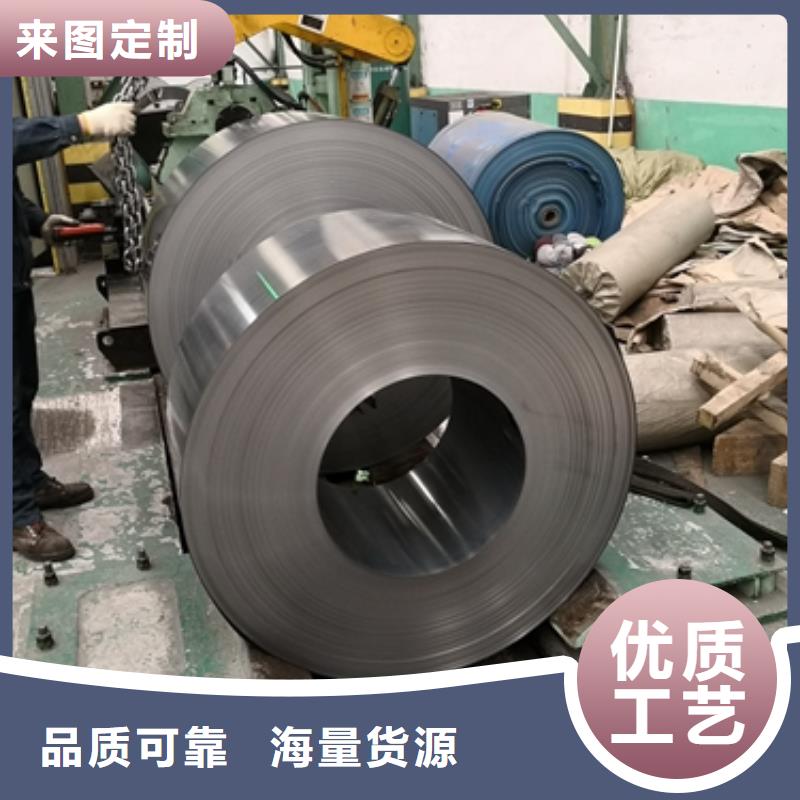想要探索供应B30APV1500的奥秘吗?不妨点击这个产品视频,它将带您走进一个精彩绝伦的世界,让您对产品的每一个细节都了如指掌。
以下是:供应B30APV1500的图文介绍
鹿程国际贸易(乌鲁木齐市分公司)制定了长期的发展战略规划,奉行“高品质、精工艺、重诚信、优服务”的经营理念,以打造成为国内【冲压用钢】品牌为企业为目标,形成了以“热情、诚恳、感恩、务实,”为核心的企业价值观,因彼此认同而携手并进,因文化融合而长足发展。为公司的稳定发展奠定了坚实的基础。公司市场定位清晰、技术不断创新、管理理念与国际同步。致力于为广大客户创造兼具高性价比与高品质服务的【冲压用钢】产品。鹿程国际贸易(乌鲁木齐市分公司)愿与您共同努力,为推动【冲压用钢】行业加速发展而奋斗!



电工钢硅钢片硅钢按Si质量分数分类分为Si<0.5%的电工钢和0.5~4.5%Si的硅钢两类,两者通称为电工钢板。前者在制造电磁性能要求不高的民用小型电器领域有着广泛的需求,此类硅钢片的特点在于硅含量明显低于常规电工钢,制备工艺流程简单,成本较低,与普碳钢类似。后者包含的种类、附近牌号极为复杂。高硅钢是指4.5%~6.7%Si的Si-Fe合金,具有在高频下铁损明显降低、附近 磁导率高、附近矫顽力低、附近磁性能极为优异的特点,主要用来制造高频电机、附近高频变压器、附近扼流线圈和高频磁屏蔽等。但由于Si含量过高,室温条件下塑性极差,无法轧制成形。6.5%Si因为其独特的磁性能而自成体系,目前仅有少量通过渗硅工艺制备的无取向6.5%Si-Fe合金材料可以成卷供应,更具性能优势的取向6.5%Si-Fe合金制备则更为困难。



电工钢硅钢片:比总损耗(铁损)specific total loss (iron loss)比总损耗是指磁极化强度按正弦变化,其峰值和频率为特定值时,单位质量材料所吸收的总功率,比总损耗用符号 P (Jm/f)表示,单位为 W/kg(或 W/lb)。例:P1.7/50表示在磁极化强度在 1.7T、当地频率在 50Hz 下测得的单位 kg(或 lb)试样的比总损耗;P1.7/60表示在磁极化强度在 1.7T、当地频率在 60Hz 下测得的单位 kg(或 lb)试样的比总损耗。3.2 磁极化强度(磁感应强度)magnetic polarization (magnetic induction)磁极化强度是指试样受交变磁场磁化时,特定磁场强度峰值的磁极化强度峰值,其符号为 J(H),单位为 T(特斯拉)。例:J800表示对应于磁场强度 H 为 800A/m(用峰值表示)下的磁极化强度。3.3 比视在功率 specific apparent power对于设定的磁极化强度和频率值,磁化单位质量的铁芯所消耗的交流电源总功率为比视在功率,其符号为 Ss,单位为 VA/kg。例:Ss1.7/50表示磁极化强度在 1.7T、当地频率在 50Hz 下测得的单位 kg 试样的比视在功率。3.4 A 计权磁致伸缩速度水平 A-weighted magnetostriction velocity level,LVA 当磁极化强度随时间按正弦规律变化,其峰值为某一标定值,变化频率为某一标定频率时,单位长度电工钢片(带)沿磁化方向上发生磁致伸缩所引起的表面振动声压水平为 A 计权磁致伸缩速度水平。



电工钢硅钢片硅钢是一种硅铁合金。用硅钢轧制的片材是电工领域中应用广的软磁材料,因而硅钢片又称电工钢片。硅钢片广泛用于电动机、发电机、变压器、扼流圈、电磁机构、继电器及测量仪表中电机工业大量使用厚度为0.35~0.50mm的硅钢片,用于:中型旋转机,压缩电机,通用马达,小型精密电机,电动汽车,压缩机,通用电机,电源变压器,精密变压器,节能电机,焊机变压器,稳压器,磁性密封器,加速器用电磁铁,汽车电机等;在电信高频技术中常用0.05~0.20mm的薄带钢片,以便更有效地降低涡流损耗。热轧硅钢片厚度为0.35~0.50mm,密度为7.55~7.70g/cm3,多用于大、中、小型交、直流电动机;冷轧无取向硅钢片厚度为0.35~0.50mm,密度为7.65~7.75g/cm3,多用于大型交流发电机、电动机,大、中、小型交、直流电动机;冷轧取向硅钢片厚度为0.23mm 0.27mm 0.3mm 0.35mm,密度为7.65g/cm3,多用于电力变压器、油浸式变压器,干式变压器,电抗器、磁放大器等;冷轧取向薄带厚度为0.05~0.20mm,多用于无线电高频变压器。


电工钢硅钢片Electrical steel, also known as silicon steel sheet, is an indispensable metal material in the power, electronics, and military industries, and is also the largest functional material in production. It is mainly used as the iron core for various motors, generators, and transformers. Since it is a functional material, its performance testing also revolves around "function". These indicators are often mentioned in trade and processing processes, and a brief understanding can help everyone better carry out their work. The performance testing of electrical steel mainly includes the following aspects: magnetic inspection, stacking coefficient inspection, coating adhesion inspection, repeated bending inspection, size and shape surface inspection, and conventional mechanical property inspection. In addition to the types of products listed above, there are also some special purpose electrical steel plates, such as 0.15 and 0.20mm thick 3% Si cold-rolled non oriented silicon steel strips and 0.025, 0.05, and 0.1mm thick 3% Si cold-rolled oriented silicon steel strips, which are used as intermediate and intermediate grade High frequency motors and transformers, as well as pulse transformers, etc; 0.7mm thick 3% Si high-strength cold-rolled non oriented silicon steel plate for relays and power switches; High strength cold-rolled electrical steel plate for new high-speed motor rotors; Low carbon electrical steel hot-rolled thick and cold-rolled plates for magnetic shielding and high-energy accelerator electromagnets such as medical magnetic resonance tomography scanners; 4.5% to 6.5% Si high silicon steel plates for high-frequency motors, transformers, and magnetic shielding.
Generally, motors, transformers, and other electrical components are required to have high efficiency, low power consumption, small size, and light weight. Electrical steel plates are usually guaranteed to have magnetic properties based on core loss and magnetic induction strength. Magnetic induction strength is the number of magnetic lines passing through a unit cross-sectional area of the iron core, also known as magnetic flux density. It represents the material‘s magnetization ability, measured in T. The magnetic induction strength of electrical steel plates is high, and the excitation current (also known as no-load current) of the iron core is reduced. Copper and iron losses are also reduced, which can save electrical energy. When the power of the motor and transformer remains constant, the magnetic induction intensity is high, and the design Bm can be increased. The cross-sectional area of the iron core can be reduced, which reduces the volume and weight of the iron core, and saves the amount of electrical steel plates, wires, insulation materials, and structural materials used. This can reduce the total loss and manufacturing cost of the motor and transformer, and is beneficial for the manufacturing, installation, and transportation of large transformers and motors. The main requirements for the performance of silicon steel are:
1. Low iron loss is the most important indicator of the quality of silicon steel sheets. Various countries classify grades based on iron loss values, with the lower the iron loss, the higher the grade.
2. Under strong magnetic fields, the magnetic induction intensity (magnetic induction) is high, which reduces the volume and weight of the iron core of the motor and transformer, saving silicon steel sheets, copper wires, and insulation materials.
3. The surface is smooth, flat, and the thickness is uniform, which can improve the filling coefficient of the iron core.
4. Good lamination performance is more important for manufacturing micro and small electric motors.
5. The adhesion and weldability of the surface insulation film are good, which can prevent corrosion and improve the punching performan



 08qx.com
08qx.com






